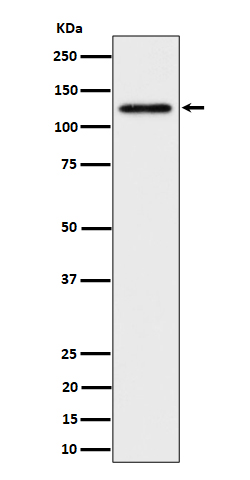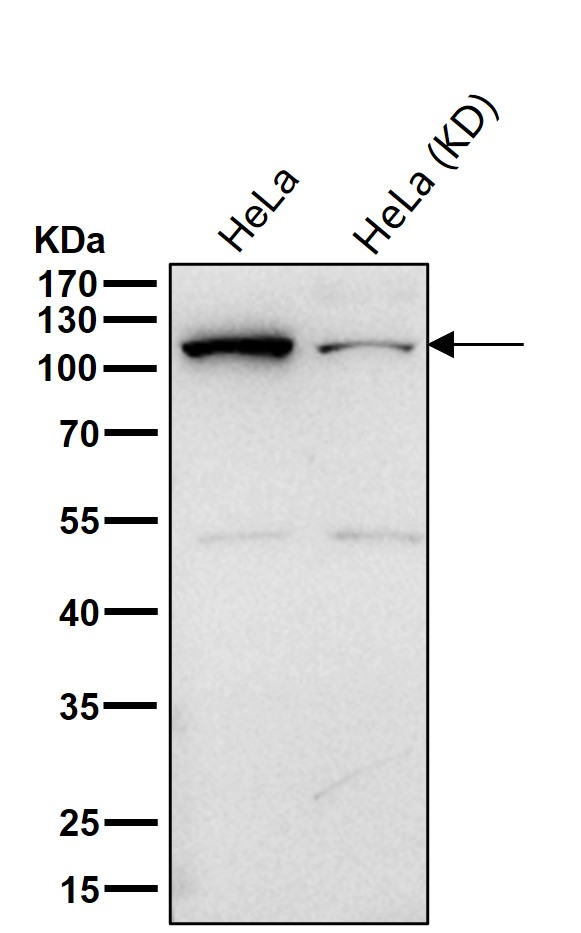


| WB | 咨询技术 | Human,Mouse,Rat |
| IF | 咨询技术 | Human,Mouse,Rat |
| IHC | 咨询技术 | Human,Mouse,Rat |
| ICC | 技术咨询 | Human,Mouse,Rat |
| FCM | 咨询技术 | Human,Mouse,Rat |
| Elisa | 咨询技术 | Human,Mouse,Rat |
| Aliases | LEKTI; NETS; SPINK5; VAKTI;;SPINK5 |
| WB Predicted band size | 121 kDa |
| Host/Isotype | Rabbit IgG |
| Antibody Type | Primary antibody |
| Storage | Store at 4°C short term. Aliquot and store at -20°C long term. Avoid freeze/thaw cycles. |
| Species Reactivity | Human,Mouse,Rat |
| Immunogen | A synthesized peptide derived from human SPINK5 |
| Formulation | Purified antibody in PBS with 0.05% sodium azide,0.05% BSA and 50% glycerol. |
+ +
1. **《SPINK5 and Netherton syndrome: Novel mutations and immunological findings》**
- 作者:Descargues P et al.
- 摘要:研究报道了Netherton综合征患者中SPINK5基因的新突变,并通过LEKTI抗体检测皮肤组织中LEKTI蛋白的异常表达,揭示了其与皮肤屏障缺陷和炎症反应的关系。
2. **《LEKTI proteolytic processing in human primary keratinocytes, tissue distribution, and defective expression in Netherton syndrome》**
- 作者:Bitoun E et al.
- 摘要:利用特异性LEKTI抗体分析人皮肤角质细胞中LEKTI蛋白的分段加工过程,发现Netherton综合征患者中LEKTI表达缺失,导致丝氨酸蛋白酶活性失调。
3. **《Antibodies targeting the C-terminal domain of LEKTI restore stratum corneum integrity in Netherton syndrome》****
- 作者:Furio L et al.
- 摘要:开发针对LEKTI蛋白C端结构域的单克隆抗体,通过体外皮肤模型验证其修复Netherton综合征患者角质层屏障的功能,为治疗提供潜在策略。
4. **《Immunohistochemical analysis of LEKTI expression in normal and pathological skin》**
- 作者:Komatsu N et al.
- 摘要:采用免疫组化技术结合LEKTI抗体,系统比较正常皮肤与Netherton综合征等疾病皮肤中LEKTI的分布差异,揭示其在表皮分化中的调控作用。
SPINK5 (Serine Peptidase Inhibitor Kazal-Type 5) encodes LEKTI (Lympho-Epithelial Kazal-Type-Related Inhibitor), a multidomain serine protease inhibitor critical for skin barrier integrity and immune regulation. Expressed in stratified epithelia (e.g., skin, thymus), LEKTI modulates proteolytic cascades by inhibiting kallikreins and other proteases that regulate desquamation, inflammation, and antimicrobial defense. Mutations in SPINK5 cause Netherton syndrome, a severe autosomal recessive disorder characterized by congenital ichthyosiform erythroderma, hair shaft defects, and atopic manifestations due to uncontrolled protease activity and epidermal disruption.
LEKTI antibodies are tools used in research and diagnostics to detect protein expression, localization, or deficiency in tissues. In Netherton syndrome, reduced/absent LEKTI detected via immunohistochemistry aids diagnosis. Research applications include studying LEKTI's role in skin homeostasis, inflammatory pathways (e.g., PAR-2 signaling), and therapeutic strategies (e.g., protease inhibitors or gene therapy). Commercial antibodies target specific LEKTI domains (e.g., D9. D15) to assess functional fragments. Challenges include cross-reactivity due to LEKTI's complex 15-domain structure and post-translational processing. Recent studies also explore LEKTI's potential as a biomarker in atopic dermatitis and cancer.
×